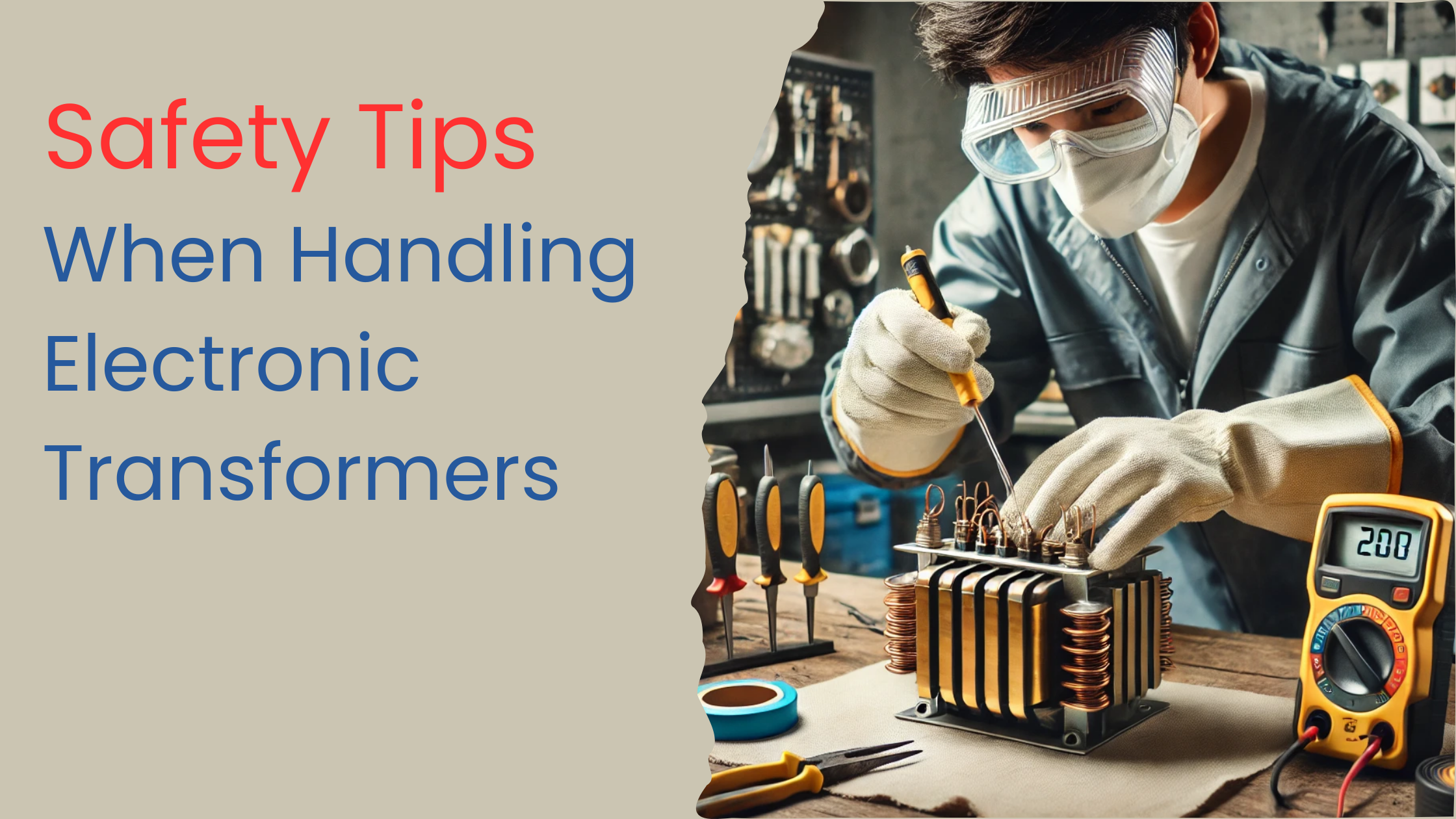Advice for Safety When Using Electronic Transformers

Safety Tips When Handling Electronic Transformers
Electronic transformers are integral parts of electric and electronic circuits, providing voltage regulation for multiple applications. Being used in machines, home appliances, or even commercial electrical infrastructure, transformers are handled with precision to avoid accidents, equipment malfunction, and electric shock. In 110220 Store, safety and efficiency always come first in handling electronic transformers. In this blog, we will share critical safety precautions while handling electronic transformers to provide a safe working area.
Understanding Electronic Transformers
Acting as voltage regulators, electronic transformers lower high-voltage electricity to more useable levels. Commonplaces in power supplies, LED lighting systems, and industrial electrical configurations are they. Using these tools calls for understanding of their structure, operation, and possible hazards.
Why Safety Matters
Electrical shocks, short circuits, fires, and even system failures can result from improper handling of transformers. People can reduce risks and guarantee effective transformer operation by adhering to safety regulations.
Essential Safety Tips for Handling Electronic Transformers
1. Always Disconnect Power Before Handling
Make sure the power source is fully disconnected before performing any maintenance, inspections, or replacements on an electronic transformer. By taking this precaution, unintentional shocks or electrocution are avoided.
2. Use Personal Protective Equipment (PPE)
Exposure to electrical hazards can be reduced by wearing the proper PPE, such as rubber-soled shoes, safety goggles, and insulated gloves. PPE acts as a barrier to prevent burns and shocks.
3. Follow Manufacturer Guidelines
The manufacturer provides specific operating instructions for each transformer. Always follow these instructions for installation, upkeep, and safety measures.
4. Inspect for Physical Damage
Examine the transformer visually for any obvious damage, such as burnt parts, loose wires, or cracked insulation, before using it. Because damaged transformers present significant electrical risks, they should never be used.
5. Avoid Overloading the Transformer
Transformers can handle a certain amount of load. Overheating, component damage, and even fire hazards may arise from going over this limit. Make sure the transformer is always operating within its rated capacity.
6. Keep Transformers Away from Moisture and Heat
Excessive heat and moisture can deteriorate transformer insulation and raise the possibility of short circuits. Transformers should be stored and used in dry, temperature-controlled spaces.
7. Use Proper Wiring and Connections
Verify that the connections and wiring meet the requirements of the transformer. Safety risks, inefficiencies, and malfunctions can result from improper wiring.
8. Secure Mounting and Placement
To avoid movement or vibrations that could eventually cause wire loosening or damage, transformers should be firmly installed on stable surfaces.
9. Regular Maintenance and Testing
Transformers run effectively and safely thanks to routine testing and inspections. Frequent testing using a multimeter or other diagnostic instruments can assist in spotting possible problems before they become more serious.
10. Be Cautious of High Voltage Areas
Extra care should be taken when handling high-voltage transformers. Only qualified individuals should perform maintenance or repairs in high-voltage areas, which should be clearly marked.
11. Properly Ground the Transformer
Grounding lowers the chance of shock and stops electrical problems. Transformers should always be grounded correctly in accordance with industry standards.
12. Store Spare Transformers Safely
Transformers should be kept out of direct sunlight and away from potentially dangerous materials in dry, well-ventilated spaces when not in use.
13. Handle with Care During Transportation
To avoid physical damage, use the proper lifting and handling techniques when relocating transformers. For safe transportation, larger transformers might need specific equipment.
14. Be Aware of Noise and Vibration Issues
Vibrations or excessive noise may be signs of internal transformer problems. If odd symptoms appear, carry out an examination to find and fix the issue.
15. Train Personnel on Transformer Safety
Everyone who handles or works close to transformers needs to receive sufficient safety training. Training improves workplace safety and lowers human error.
Emergency Measures in Case of Transformer Malfunction
Even when safety precautions are taken, transformers can still malfunction. Take the following urgent measures in such situations:
- Shut Down the Power: To avoid additional harm or dangers, turn off the power source right away.
- Evacuate the Area: Leave the area right away if there is a chance of a fire or electrical discharge.
- Use a Fire Extinguisher if Necessary: If a fire breaks out, use a dry chemical or CO2 extinguisher made for electrical fires.
- Call a Qualified Technician: Repairs and replacements should only be handled by qualified experts.
Final Thoughts
When working with electronic transformers, safety should always come first. You can safeguard the equipment, other people, and yourself from possible risks by adhering to these rules. We provide premium transformers at 110220 Store that meet the most recent safety regulations, guaranteeing dependability and longevity. Our staff is available to assist you whether you need help selecting the appropriate transformer or need professional guidance on handling and upkeep.
Visit the 110220 Store right now for high-quality electronic transformers and knowledgeable assistance!

